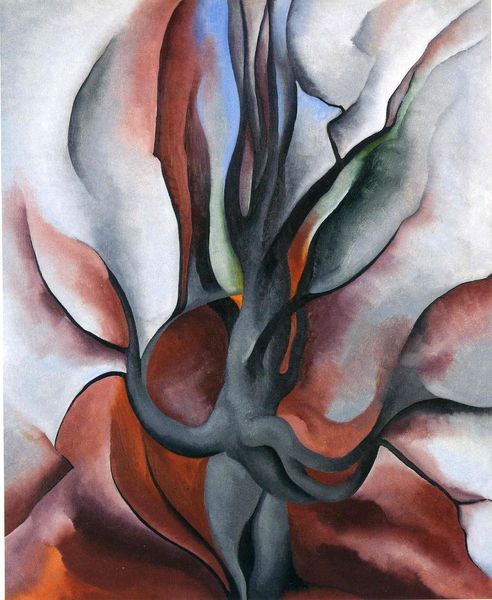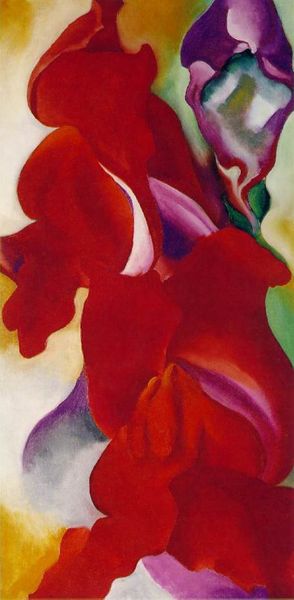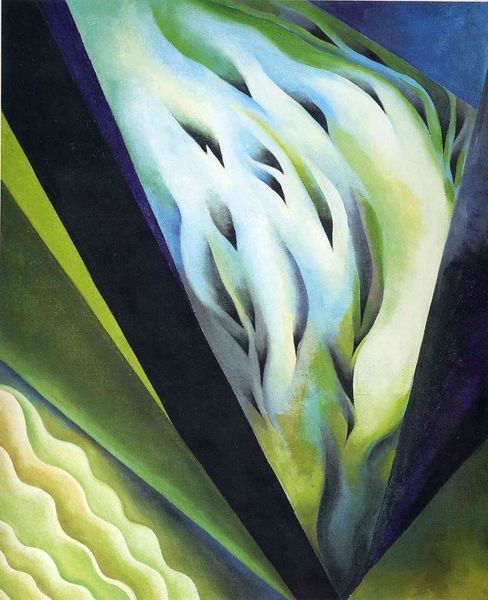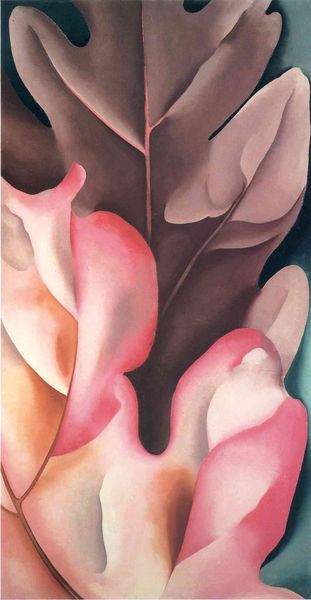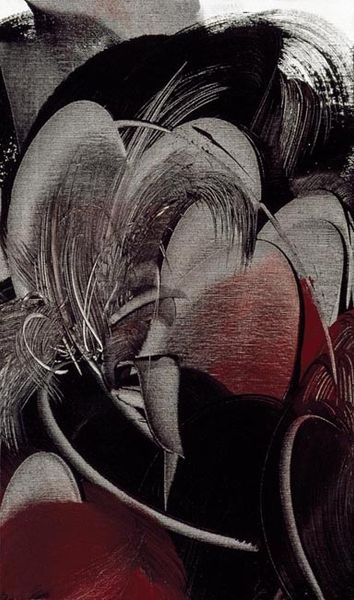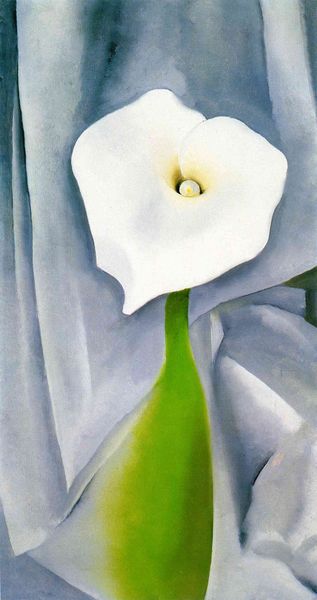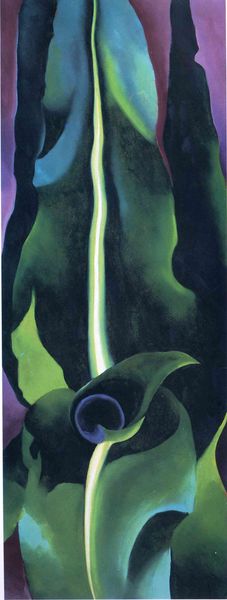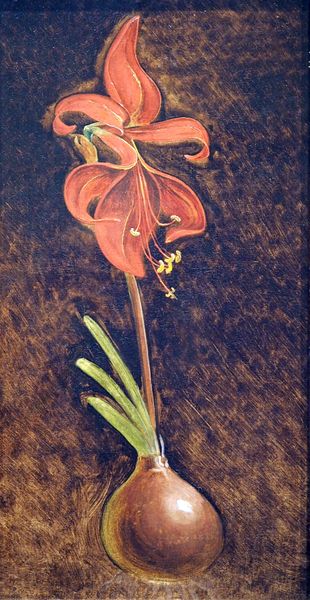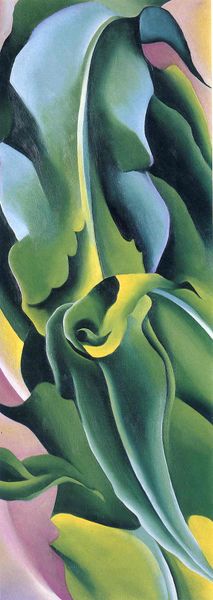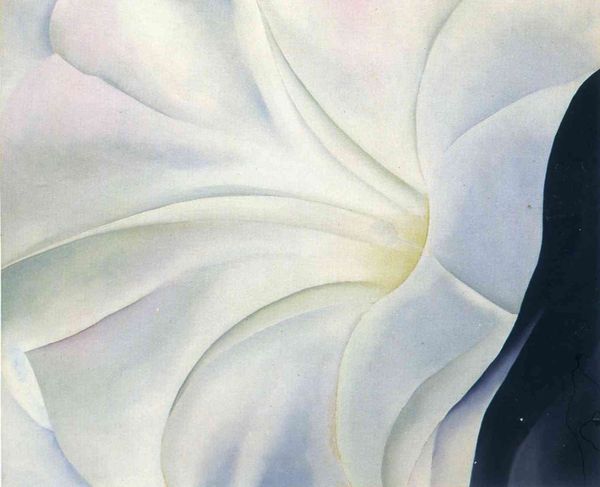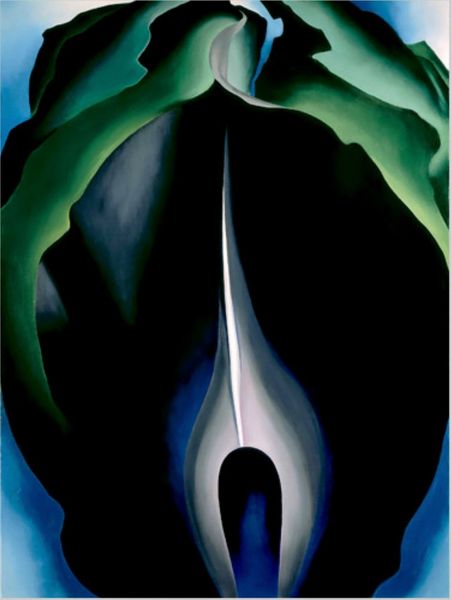
painting, oil-paint
#
precisionism
#
organic
#
painting
#
oil-paint
#
figuration
#
oil painting
#
plant
#
modernism
Copyright: Georgia O'Keeffe,Fair Use
Curator: Here we have Georgia O'Keeffe's "Canna Leaves," created in 1925. O'Keeffe, positioned as a key figure in American Modernism and Precisionism, offers us in this oil painting an almost hyper-real perspective on the natural world. Editor: Whoa, immediate feeling is…brooding elegance. Dark, lush, but there's this hidden, almost melancholic center. It's a big canvas presence but still feels incredibly intimate. Like you've stumbled into the secret life of plants. Curator: Exactly. We can delve into the socio-political dimensions of this intimacy and scale. In the 1920s, a heightened focus on nature provided artists like O’Keeffe a space to explore new symbolic landscapes, and negotiate gendered expectations about women artists, frequently placing emphasis on organic forms to subvert these norms and challenge industrialization and urbanization. Editor: You know, I totally see that rebellion lurking beneath the surface now that you say that. These leaves aren't delicate little things; they're assertive. The scale is undeniably bold. They own the space. I like how she made me consider something far from dainty. It reminds me, do we ever truly control nature? Or does it always hold some power? Curator: And how do we control women too? Consider O’Keeffe’s consistent resistance against the framing of her work through a psychoanalytic lens, where her depictions of flowers and plants were relentlessly interpreted as veiled representations of female anatomy and sexuality, a view influenced by interpretations of Freudian theory prominent at the time. Editor: Right. Instead, this feels almost…alien. Those gradients of purple and green! Not the everyday reality but nature viewed with something more profound—with mystery, passion, perhaps a bit of delightful morbidity. Curator: What if that morbidity comes from reflecting the limitations placed on O’Keeffe to explore subjects beyond botanical art and what she thought of beauty herself? I consider those restrictions and wonder if, beneath its visual appeal, this piece could provoke conversation about how the aesthetic pleasure might distract from a conversation around imposed categorization and denied agency. Editor: That's… something else to chew on, absolutely! Next time I glance at a bunch of canna leaves, it won’t be without a pinch of rebellion in my own perspective. Thanks for unlocking some hidden meanings for me.
Comments
No comments
Be the first to comment and join the conversation on the ultimate creative platform.

